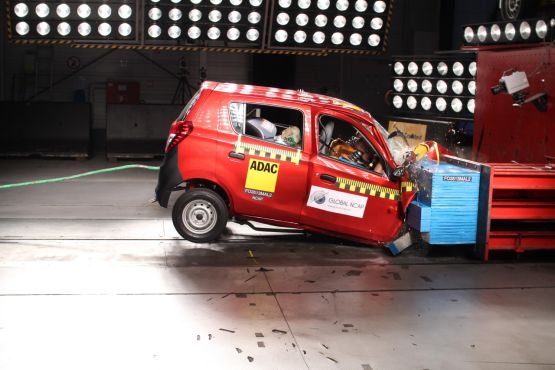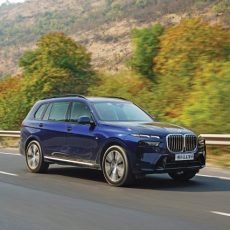>> Maruti-Suzuki Alto 800
In the 64 km/h NCAP test, the Maruti-Suzuki Alto 800 achieved a zero-star rating for its adult occupant protection. The vehicle structure was rated as unstable, increasing the risk of life-threatening injuries and making the car unsuitable for the fitment of airbags.
Using the child seats recommended by Maruti-Suzuki, the Alto 800 achieved a two-star rating for child protection.
The Alto 800 was not able to meet the UN’s minimum safety requirements in the 56 km/h crash test.
>> Tata Nano
In the 64 km/h NCAP test, the Tata Nano achieved zero stars rating for its adult occupant protection. The vehicle structure was rated as unstable, increasing the risk of life-threatening injuries and making the car unsuitable for the fitment of airbags.
The car achieved a zero-star rating for its child protection as it was not possible to install child seats in the car.
The Nano was not able to meet the UN’s minimum safety requirements in the 56 km/h crash test.
>> Hyundai i10
In the 64 km/h NCAP test, the Hyundai i10 achieved a zero-star rating for its adult occupant protection. The vehicle structure was rated as unstable, increasing the risk of life-threatening injuries.
Using the child seats recommended by Hyundai, the i10 achieved a one-star rating for child protection. The three year-old dummy indicated a high risk of serious injury.
The i10 was not able to meet the UN’s minimum safety requirements in the 56 km/h crash test.
>> Ford Figo
In the 64 km/h NCAP test, the Ford Figo achieved a zero-star rating for its adult occupant protection. The vehicle structure was rated as stable, but without safety equipment such as airbags, too much of the crash energy was absorbed directly by the occupants.
Using the child seats recommended by Ford, the car achieved a two-star rating for its child protection.
The Figo was able to meet the UN’s minimum safety requirements in the 56 km/h crash test as the driver’s head narrowly avoided direct contact with the steering wheel.
>> Volkswagen Polo
In the 64 km/h NCAP test, the Volkswagen Polo without airbags achieved a zero-star rating for its adult occupant protection. The vehicle structure was stable, but without safety equipment such as airbags, dummy readings indicated a high risk of life-threatening injuries.
With two airbags (driver and front passenger), the Volkswagen Polo achieved a four-star rating for adult occupant protection in the 64 km/h NCAP test. Thanks to the airbags, the protection offered to the driver and passenger head and neck was good.
Using the child seats recommended by Volkswagen, the Polo achieved a three-star rating for child protection.
Without airbags, the Polo was not able to meet the UN’s minimum safety requirements in the 56 km/h crash test.
Global NCAP advises consumers to check carefully which version of the Polo they buy.
Following the results, Volkswagen India have announced that all variants of the Polo will be offered with dual front airbags as standard, announcing a corresponding price increase of only 2.7 per cent.





